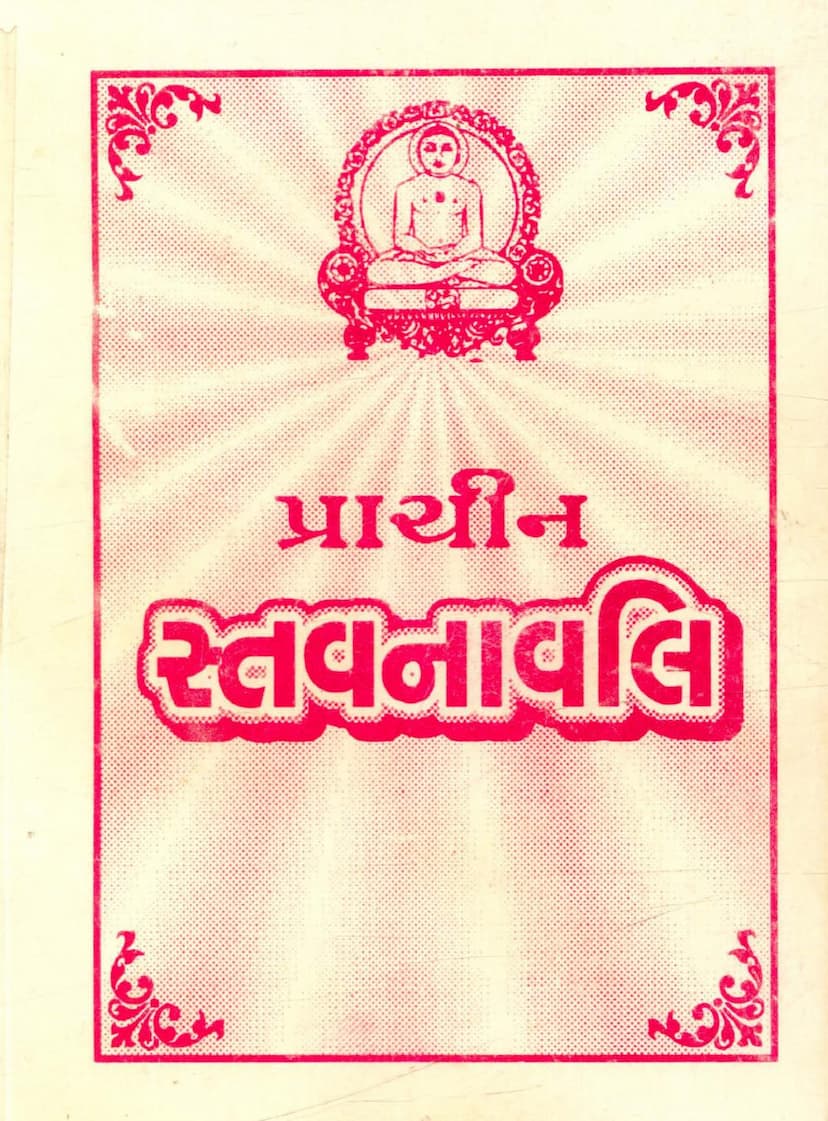Prachin Stavanavali
Added to library: September 2, 2025

Summary
Here's a comprehensive summary of the Jain text "Prachin Stavanavali," based on the provided content:
Book Title: Prachin Stavanavali (Collection of Ancient Stanzas/Hymns) Author(s): Chandulal Chotalal Shah Parivar (The text indicates it is dedicated by this family) Publisher: Chandulal Chotalal Shah Parivar Catalog Link: https://jainqq.org/explore/032219/1
Overall Theme and Content:
"Prachin Stavanavali" is a compilation of devotional hymns, prayers, and praises (known as "stavan" and "chetyavandan") dedicated to the Tirthankaras and significant Jain pilgrimage sites. The book is a collection of devotional literature aimed at fostering spiritual devotion and adherence to Jain principles.
Key Sections and Content Breakdown:
-
Invocation and Dedication (Pages 2-3):
- The book begins with salutations to Lord Jinendra, Dharmnath Swami, Vasupujya Swami, and the "Navo Loae Savvasahunam" mantra, signifying reverence for Jain deities and saints.
- It highlights the core Jain philosophy of "Leave the world, embrace asceticism, attain liberation."
- The dedication is made by the Chandulal Chotalal Shah Parivar family, with blessings from revered Gurus and spiritual leaders (Shri Vijay Ramchandra Surishwarji Maharaj, Shri Vijay Nayanvardhan Surishwarji M.S., and Shri Gunodaya Shri Ji M.S.). It is offered during the auspicious observance of "Shaashwati Oli" by a family member.
-
Index (Anukramanika) (Pages 4-5):
- The index provides a detailed listing of the hymns, organized by Tirthankara and pilgrimage site.
- It includes "chetyavandan" (veneration of idols/temples) and "stavan" (hymns of praise) for each of the 24 Tirthankaras, starting from Adinath (Rishabhdev) and ending with Mahavir Swami.
- It also lists hymns dedicated to important pilgrimage sites such as Siddhachala, Sametshikhar, Abu, and Ranakpur.
- Further sections include specific festival hymns (like Diwali), prayers for various occasions, and hymns dedicated to specific spiritual concepts or figures like Gautam Swami.
-
Devotional Rituals (Pages 6-9):
- Utkrushta (Excellent) Devavandan Vidhi: This section details the elaborate procedure for performing excellent veneration of deities. It includes specific mantras, postures (like kneeling), recitation of verses, and meditative practices (kausggarg). It emphasizes performing this three times daily.
- Madhyam (Medium) Devavandan Vidhi: This outlines a slightly less elaborate but still significant method of veneration.
- Jaghanya (Minimal) Devavandan Vidhi: This describes the most basic form of veneration, performed by sitting respectfully before the deity.
-
Hymns to Tirthankaras and Pilgrimage Sites (Pages 9-168):
- This forms the bulk of the book, featuring numerous "chetyavandan," "stavan," and "stuti" (praises) for each of the 24 Tirthankaras.
- Each Tirthankara section typically includes hymns composed by various revered Jain scholars and poets like Shri Virvijayji, Shri Padmavijayji, Shri Gyanvimalji, Shri Anandghanji, Shri Devchandji, Shri Yashovijayji, and others.
- The hymns often recount the life events, key virtues, and spiritual significance of the Tirthankaras, using poetic language and various devotional themes.
- The content is structured to allow for focused devotion to each Tirthankara and sacred site.
-
Specific Festival and Site Hymns (Pages 169 onwards):
- Siddhachala: Several hymns and praises are dedicated to this paramount Jain pilgrimage site, highlighting its spiritual significance.
- Simandhar Swami: Hymns dedicated to this living Tirthankara, residing in Mahavideha, are included.
- Beej (General Tirthankara Hymns): This section seems to contain general verses related to Tirthankaras or specific devotional practices observed on certain "bij" (specific auspicious days).
- Gyan Panchami: Hymns for this festival of knowledge are provided.
- Ashtami (Eighth Day of Lunar Fortnight): Hymns are included for the auspicious Ashtami days, often associated with specific Tirthankara events.
- Ekadashi (Eleventh Day of Lunar Fortnight): Hymns related to Ekadashi observances are present.
- Sametshikhar Giri: This major pilgrimage site is honored with dedicated hymns.
- Abu Giri: Hymns for this pilgrimage site are also featured.
- Ranakpur: Praises for the renowned Ranakpur temples are included.
- Diwali: Hymns for the festival of Diwali are present.
Key Devotional and Philosophical Elements:
- Tirthankara Worship: The central focus is on venerating the 24 Tirthankaras, recognizing their virtues, life stories, and their role in showing the path to liberation.
- Pilgrimage Significance: The book acknowledges the importance of pilgrimage sites like Siddhachala, Sametshikhar, and Abu, which are considered sacred spaces for spiritual advancement.
- Ritualistic Practice: The detailed descriptions of "devavandan vidhi" highlight the importance of performing devotional rituals with proper form and mindfulness.
- Poetic Devotion: The use of "stavan" and "stuti" showcases devotion through poetic expression, evoking emotional connection and spiritual feeling.
- Scholarly Contribution: The inclusion of hymns by various renowned Jain scholars signifies a rich tradition of devotional literature and scholarship.
- Jain Principles: Underlying the devotional content are the core Jain tenets of non-violence (ahimsa), asceticism (sanyam), knowledge (gyan), faith (shraddha), and conduct (charitra) as paths to liberation (moksha).
In Essence:
"Prachin Stavanavali" is a valuable resource for Jain spiritual practice, offering a structured and diverse collection of devotional material to connect with the Tirthankaras and sacred sites. It serves as a guide for performing worship and a source of inspiration for cultivating a deeper spiritual life within the Jain tradition.